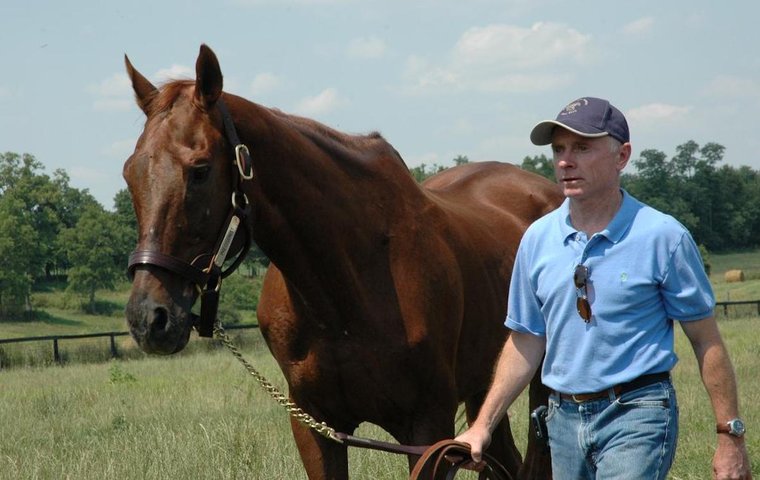
Don’t miss the latest instalment of Jay Hovdey’s must-read monthly series as he focuses on a hugely popular Hall of Famer who graced the sport for six seasons and was still winning top races at the age of seven
In the never-ending search for the perfect Thoroughbred, lovers of the sport have settled for ‘old school’ and ‘all-around’ as a form of lofty compromise, and a precious few have come along fill the bill.
Round Table could win from seven furlongs on the dirt to 12 furlongs on the grass. Dr. Fager was a champion in three divisions. Secretariat left nothing to be desired, except more of the same.
Another name is often mentioned, as a variation on the theme. Precocious, durable, versatile, and dripping with charisma, that name belongs to Precisionist, whose flaming journey across racing’s firmament stretched through parts of six memorable seasons.
“Glamorous” is how Precisionist was described by John Russell, his trainer at the end of the line. Tall and regal, he was a product of the best bloodlines nurtured by Florida breeder and owner Fred W. Hooper, an Alabama boy who made his fortune as a roadbuilder in the middle of the 20th century.
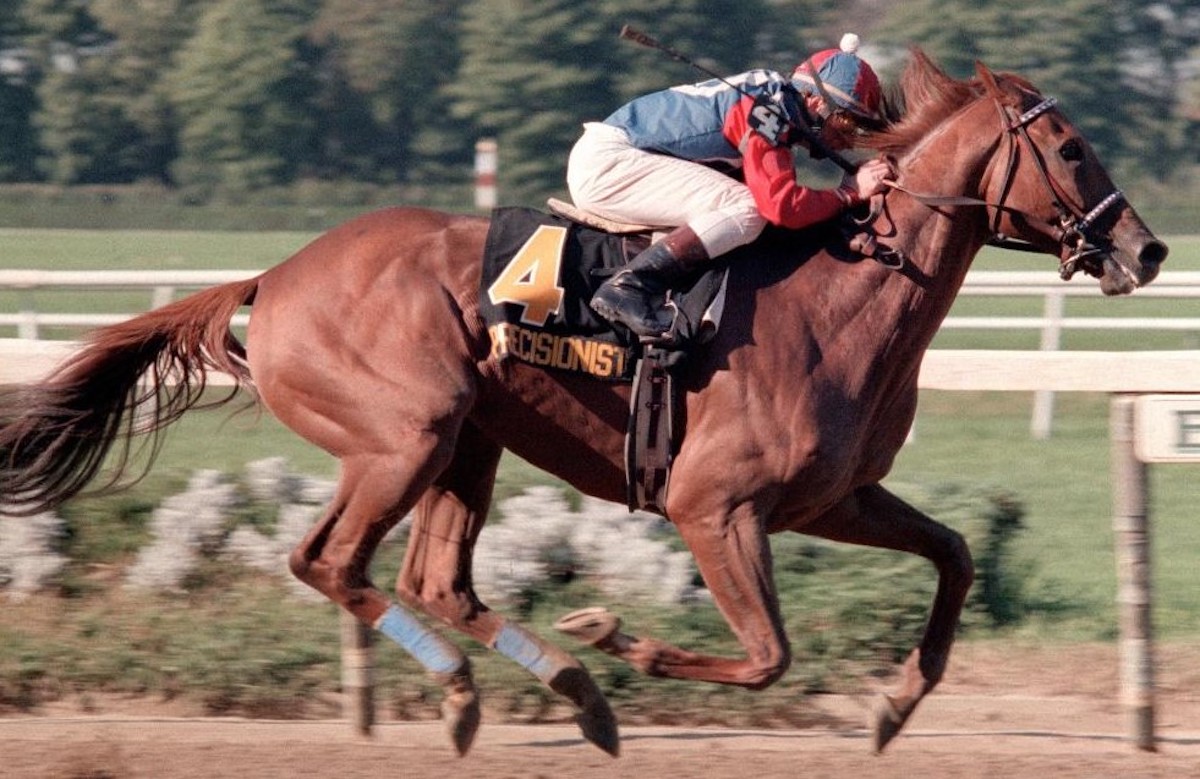 When Hooper turned to Thoroughbreds, he immediately won the 1945 Kentucky Derby with the colt Hoop Jr., then tried for the rest of his 102 years on earth to do it again.
When Hooper turned to Thoroughbreds, he immediately won the 1945 Kentucky Derby with the colt Hoop Jr., then tried for the rest of his 102 years on earth to do it again.
He failed in that narrow, difficult endeavor. But along the way Hooper presented the game with a gallery of bona fide racing stars who enhanced their ample heritage, beginning with Olympia, a son of Heliopolis, who was the fastest North American three-year-old of 1949, for at least as far as he could run.
Olympia’s quality was perpetuated through his grandson, Crozier, a son of Miss Olympia foaled in 1958. Crozier broke Hooper’s heart, at least temporarily, by finishing second in the 1961 Kentucky Derby to Carry Back, a result the owner blamed on jockey Braulio Baeza for allegedly “moving too soon.” The margin, being only three-quarters of a length, was hard to swallow.
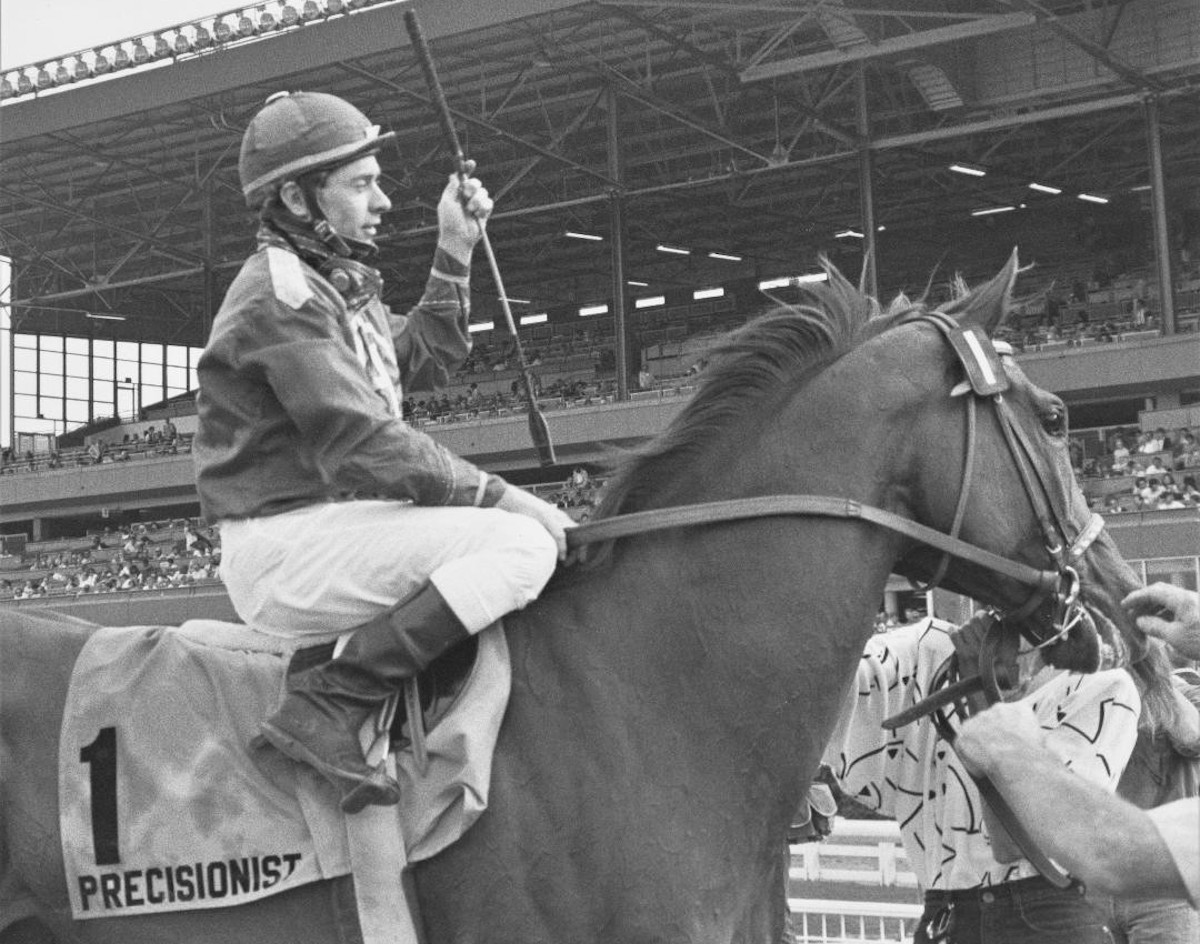 Crozier did his best to atone for the Derby loss as an older horse by winning races like the Santa Anita Handicap and Aqueduct Handicap, after which he sired a regiment of stakes winners for Hooper emanating from his Circle H Farm in Florida.
Crozier did his best to atone for the Derby loss as an older horse by winning races like the Santa Anita Handicap and Aqueduct Handicap, after which he sired a regiment of stakes winners for Hooper emanating from his Circle H Farm in Florida.
Many of them were handled early at the farm by young Leland Ross Fenstermaker, who came from Idaho attached to the famous Parke brothers employed at various times as Hooper trainers.
Notorious
The owner was notorious for shifting his personnel around, as he did with his Hall of Fame mare Susan’s Girl, who had seven trainers over the course of her career of 63 starts from 1971 through 1975.
Ross Fenstermaker finally got his chance as the last of those seven. Susan’s Girl was six at the time, and she responded to Fenstermaker’s care by winning four G1 stakes during the second half of 1975 and retiring with her third Eclipse Award.
Hooper was sufficiently impressed with his young trainer to send a raft of talent Fenstermaker’s way over the next several years. They included the stakes winners Eximious and Skillful Joy, part of a burgeoning family that traced to Hooper’s blue hen matron Poliniss, a daughter of Olympia’s son, Greek Game, foaled in 1961.
Fenstermaker knew the family like the back of his hand. He was on the farm for the early training of stakes-winners Pitching Wedge and Wedge Shot, full brothers by Crozier out of Poliniss, as well as Excellently, a daughter of Forli and Poliniss who did not make it as a racehorse but had every right to try as a broodmare.
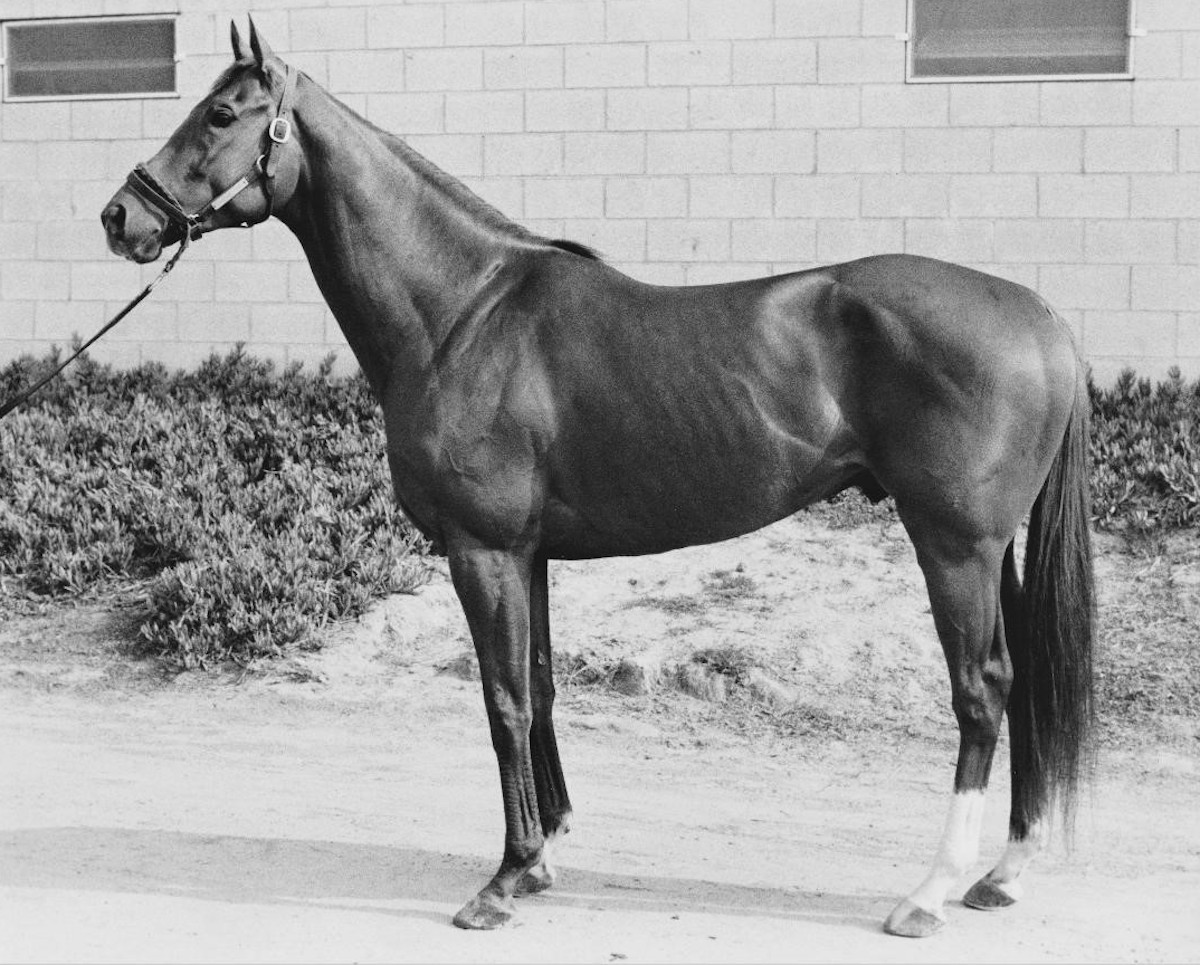 Poliness produced her final foal in 1977, but if a Crozier-Poliniss mating was so successful, sending Excellently to the stallion made perfect sense. Crozier was 22 and nearing the end of his stallion career when he covered Excellently in 1980. The resulting foal was delivered on Feb. 28, 1981.
Poliness produced her final foal in 1977, but if a Crozier-Poliniss mating was so successful, sending Excellently to the stallion made perfect sense. Crozier was 22 and nearing the end of his stallion career when he covered Excellently in 1980. The resulting foal was delivered on Feb. 28, 1981.
By the spring of 1983, Fenstermaker knew he had something special in the two-year-old Crozier-Excellently colt. He was framed like a two-story house, just waiting for the furniture to arrive. His mahogany chestnut coat was troubled only by a tickle of white below three of his ankles.
Smart and full of beans
He was smart and full of beans, ready to train and anxious to race. Fenstermaker kept the lid on Precisionist as long as he could, then turned him loose to win a Hollywood Park maiden race on July 13, 1983, by 10 lengths. Hardly a backstretch secret, Precisionist was even-money in the tote.
After that, the Hollywood Juvenile Championship was a sensible leap. Unfortunately, Precisionist finished a distant fifth to the filly Althea and emerged with a warm shin that needed time to cool down before Fenstermaker could proceed.
The colt returned in the fall to cruise home in an allowance race and then take a division of the Hoist the Flag Stakes on the Hollywood Park turf. But then came his mental meltdown before the Hollywood Futurity, for which he was rightfully favored.
The sight of Precisionist pulling Fenstermaker and groom Allison Sgroi on his way to being saddled, awash in sweat and gawking at the lights, was alarming, and he barely raised a gallop.
Fenstermaker took a deep breath and began anew in 1984, with the mandate from Hooper to find out if Precisionist was a prospect for the Kentucky Derby. Hope soared when he won the one-mile San Rafael Stakes at Santa Anita by five lengths, then fluttered to earth when he had no answer for the unheralded Mighty Adversary in the Santa Anita Derby.
While the cream of the crop convened at Churchill Downs on May 5, 1984, for the 110th Kentucky Derby, Precisionist stayed in California and pouted his way through the Spotlight Handicap on the grass, then came up short with a decent effort in the Silver Screen Handicap back on dirt.
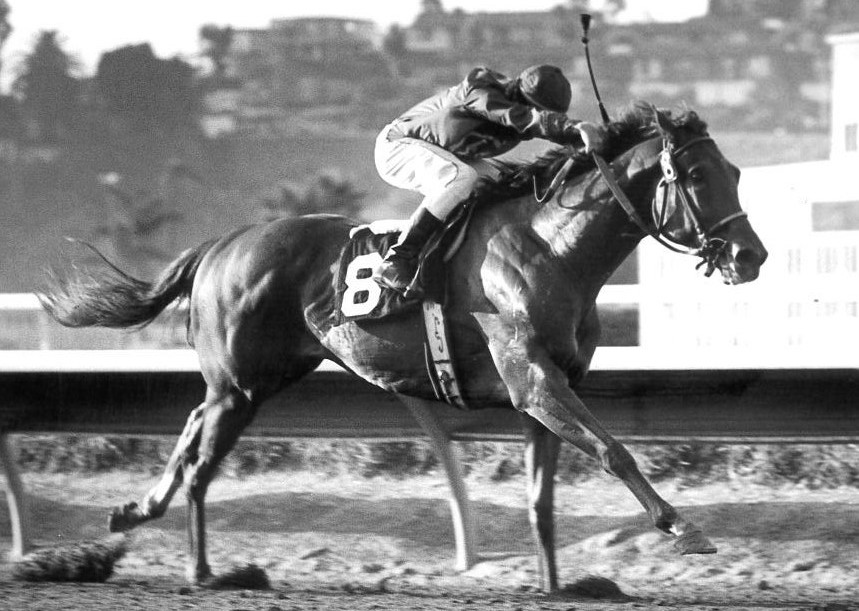 Fenstermaker fine-tuned his training and schooled his colt in the paddock, dealing more with the emotional side of Precisionist than the physical. Whatever he did, it worked.
Fenstermaker fine-tuned his training and schooled his colt in the paddock, dealing more with the emotional side of Precisionist than the physical. Whatever he did, it worked.
Faced with his first try at a mile and a quarter, Precisionist turned the Swaps Stakes in July 1984 into a one-horse parade. He won by 10 lengths, shading the two-minute mark for the distance.
With that, Fenstermaker ran him with confidence in the Del Mar Handicap, at just shy of 10 furlongs, and the full mile and a quarter of the Super Derby. Precisionist defeated older horses in the former and lost by a short head to Preakness winner Gate Dancer in the latter.
It was fitting that Precisionist should show the flag on his home track in the first running of the Breeders’ Cup Classic at Hollywood Park. Unfortunately, he was over the top, at the end of a long 1984 campaign, and was no factor.
At year’s end he was rated on the Free Handicap at 123 pounds, six below topweighted Swale, the winner of the Derby and the Belmont Stakes whose sudden death left a hole at the head of the class.
Safe distances
As the 1985 season approached, those of us fortunate enough to be able to stroll into Fenstermaker’s shed row were allowed free rein to admire Precisionist at safe distances, even as the trainer would ride him around ring, always resplendent in his red jacket and Caliente helmet decorated with images inspired by a Haight-Ashbury acid trip.
Since matriculation to open competition can be tricky, we were anxious to see what Fenstermaker had up his sleeve for the older Precisionist. Santa Anita Park in those days offered newly-turned four-year-olds a series of races exclusive to their division, beginning with the Malibu Stakes at seven furlongs, followed by the San Fernando Stakes at nine furlongs and the Charles H. Strub Stakes at 10 furlongs.
Precisionist proceeded to win all three, something only four others – including Round Table and Spectacular Bid – had been able to accomplish.
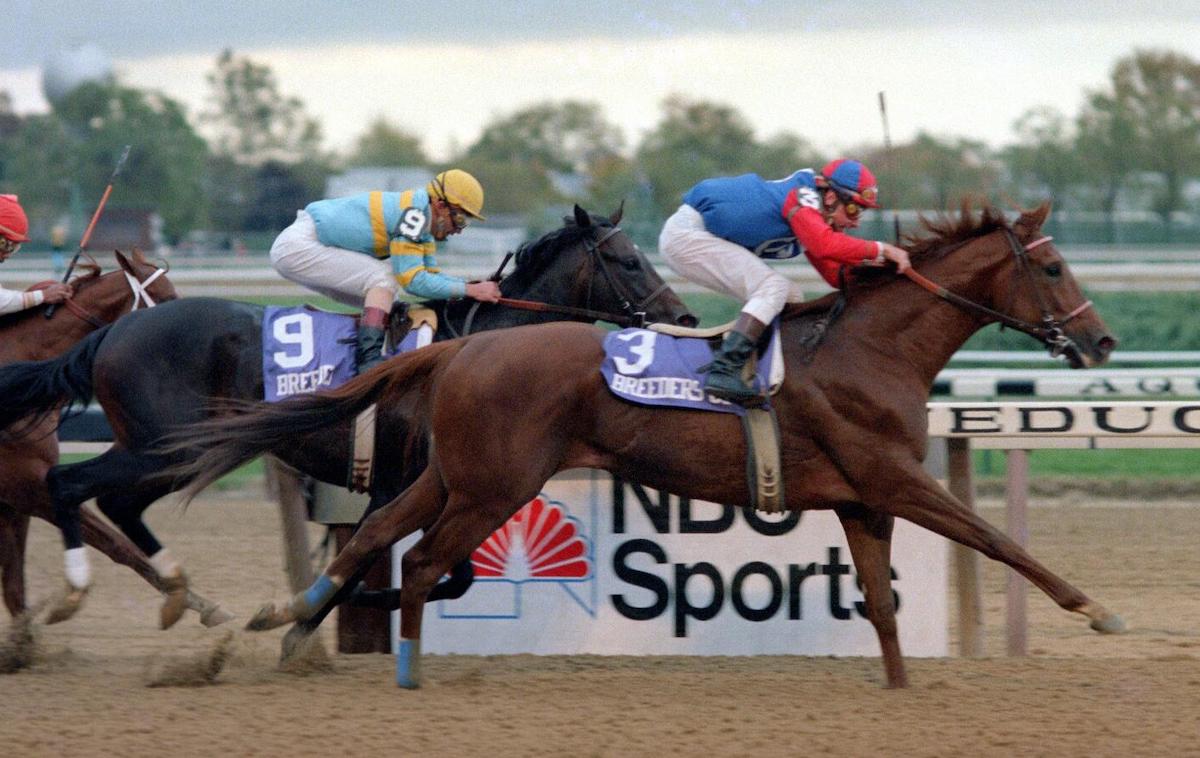 As an added bonus, there commenced that winter a genuine rivalry between Precisionist, the popular golden boy, and Greinton, a European import retooled by Charlie Whittingham as a force on the dirt.
As an added bonus, there commenced that winter a genuine rivalry between Precisionist, the popular golden boy, and Greinton, a European import retooled by Charlie Whittingham as a force on the dirt.
Between January 1985 and June 1986, they met nine times, often raising the rafters with the intensity of their battles, as when Precisionist defeated Greinton by a nose in the Strub Stakes, or when Greinton beat Precisionist by a neck in the San Bernardino Handicap, while in receipt of seven pounds.
By the time Precisionist finished second to Greinton in the 1985 Hollywood Gold Cup, he had run in 19 races over a 17-month stretch beginning at the outset of his three-year-old campaign.
Fenstermaker was able to convince Hooper that his star needed a breather before cranking up again for racing in the autumn. Precisionist responded with gratitude, while Fenstermaker made a plan.
By October, the trainer had his red colt ready to run in something, somewhere, as long as the race was not more than six or seven furlongs. That race turned out to be the Breeders’ Cup Sprint on Nov. 2, 1985, at Aqueduct.
Oh that life would always be so simple. Precisionist won the BC Sprint by three-quarters of a length over Smile, who was good enough to win the same race in 1986 at Santa Anita.
Fenstermaker was hailed as the second coming of Sunny Jim Fitzsimmons for pulling such a comeback miracle after more than four months away from competition, at which Fenstermaker responded with typical humility.
Eclipse Award
“I didn’t necessarily plan it that way,” Fenstermaker would say later. “I was able to get the works into him, and the race came up at the right time.”
Right enough to win the Eclipse Award for 1985 as champion sprinter, even though he sprinted only twice during the calendar year.
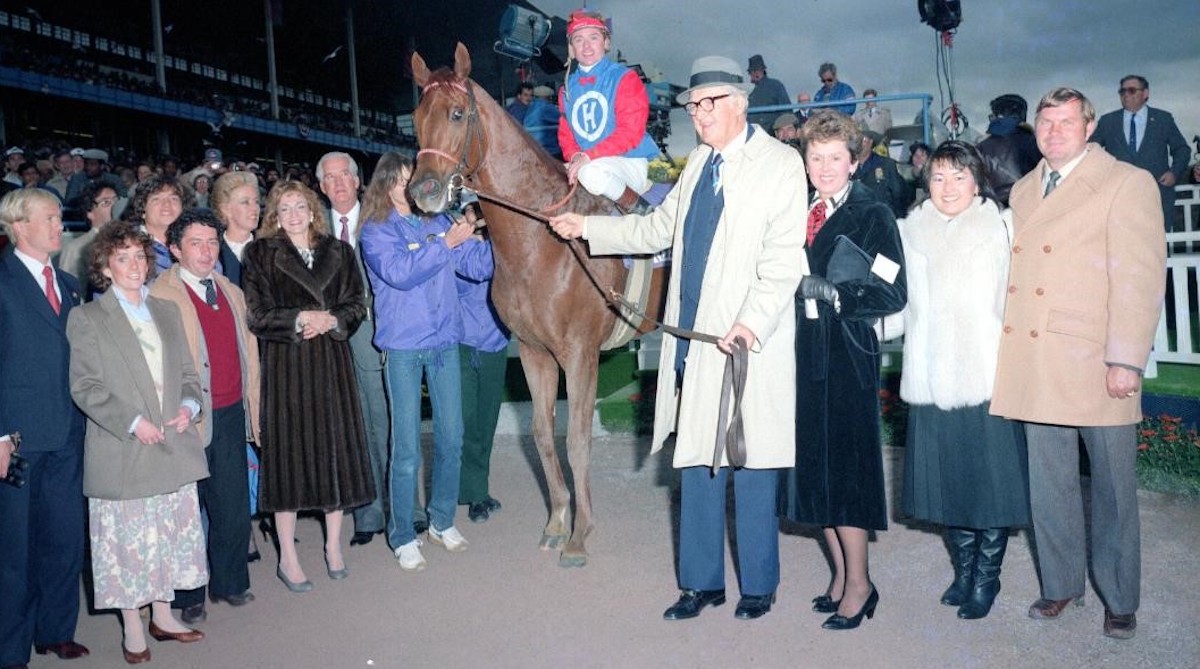
Out west, the Precisionist-Greinton rivalry continued into 1986. Their final encounter was perhaps their best, coming in the ‘86 San Bernardino at nine furlongs, with each carrying 126 pounds.
Precisionist went to the lead, rolled on through fast fractions, and held fast at the end to win by a neck. That brought their score to 5-4 in Greinton’s favor, with nothing much between them and nothing left to prove.
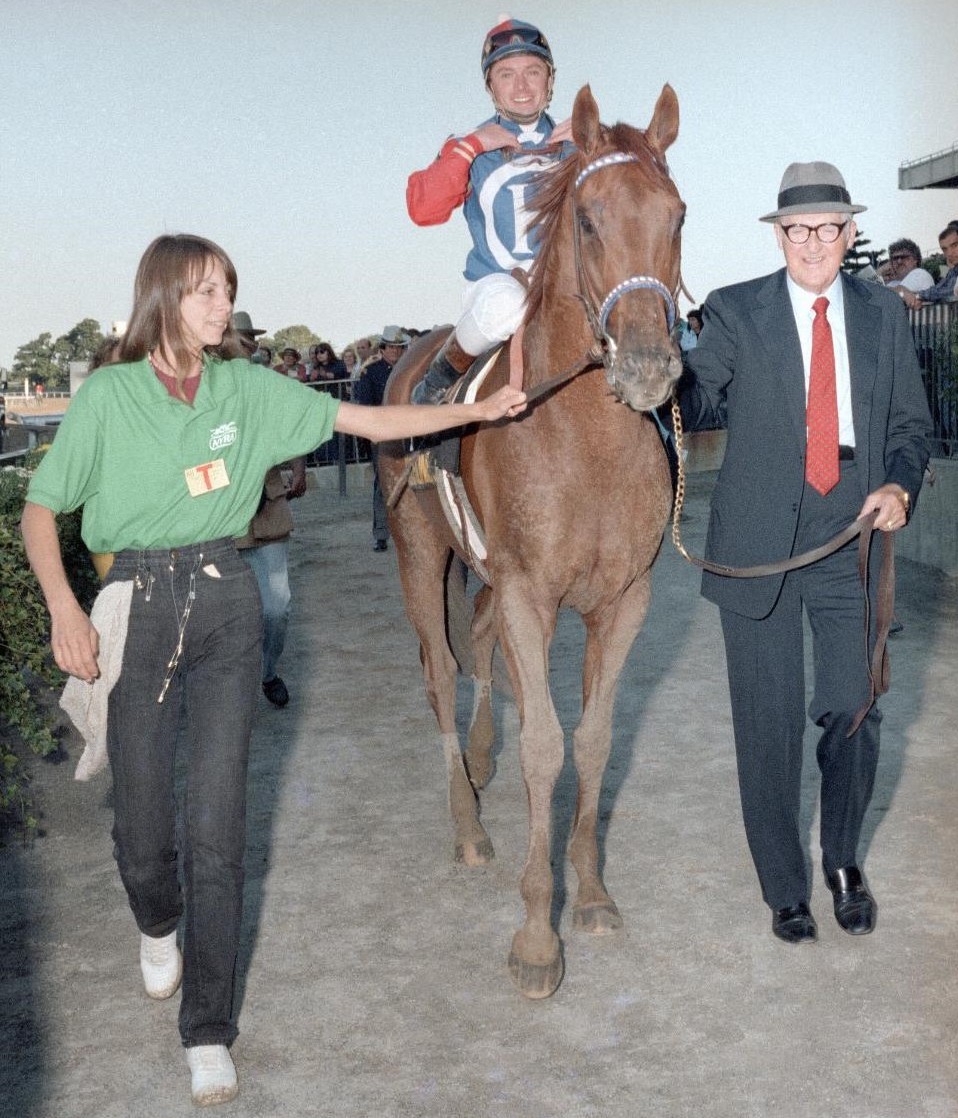 Greinton went to the sidelines with a soft-tissue injury, but another rival arose, briefly but effectively. Turkoman was a stretch-running, four-year-old son of Alydar who stood 17 hands.
Greinton went to the sidelines with a soft-tissue injury, but another rival arose, briefly but effectively. Turkoman was a stretch-running, four-year-old son of Alydar who stood 17 hands.
Precisionist was fresh from an overpowering score in the Woodward Stakes at Belmont Park when they met in the 1986 Marlboro Cup in September. The decision went to Turkoman, by one and a half lengths.
After that, Precisionist went home to win a minor handicap at Santa Anita, while Turkoman stayed in New York to just miss in the 12-furlong Jockey Club Gold Cup. That left the divisional championship, perhaps even Horse of the Year, to be decided between the two of them in the Breeders’ Cup Classic, to be run that year at Santa Anita Park on the first day of November.
It might have been a bridge too far for Precisionist. He was always in the thick of the race, but never looked like winning. The red horse followed Skywalker, alone on the lead, but could never get by. In the end Precisionist was passed by the lumbering Turkoman for second, and in the process lost his chance for a second Eclipse Award.
Two months after the Breeders’ Cup, Precisionist sustained a hairline fracture of the cannon bone in his left fore while training for another campaign. The fracture was surgically repaired with a single pin to assure stability during the healing process.
Never one to miss an opportunity, Hooper immediately made plans to send his horse to stud that very season. Precisionist responded poorly, and fertility alarms were sounded. He spent the rest of the season being tested and treated, but to no avail. The fertility problem was no different in early 1988.
However, Precisionist was physically sound and fit enough for Hooper to consider an alternative. Turning away from Fenstermaker, who was no longer training Hooper runners, the owner called upon John Russell for the quixotic comeback try of a seven-year-old stallion with a repaired leg who had not raced since November 1986. Russell had been the most successful of the seven men who trained Susan’s Girl.
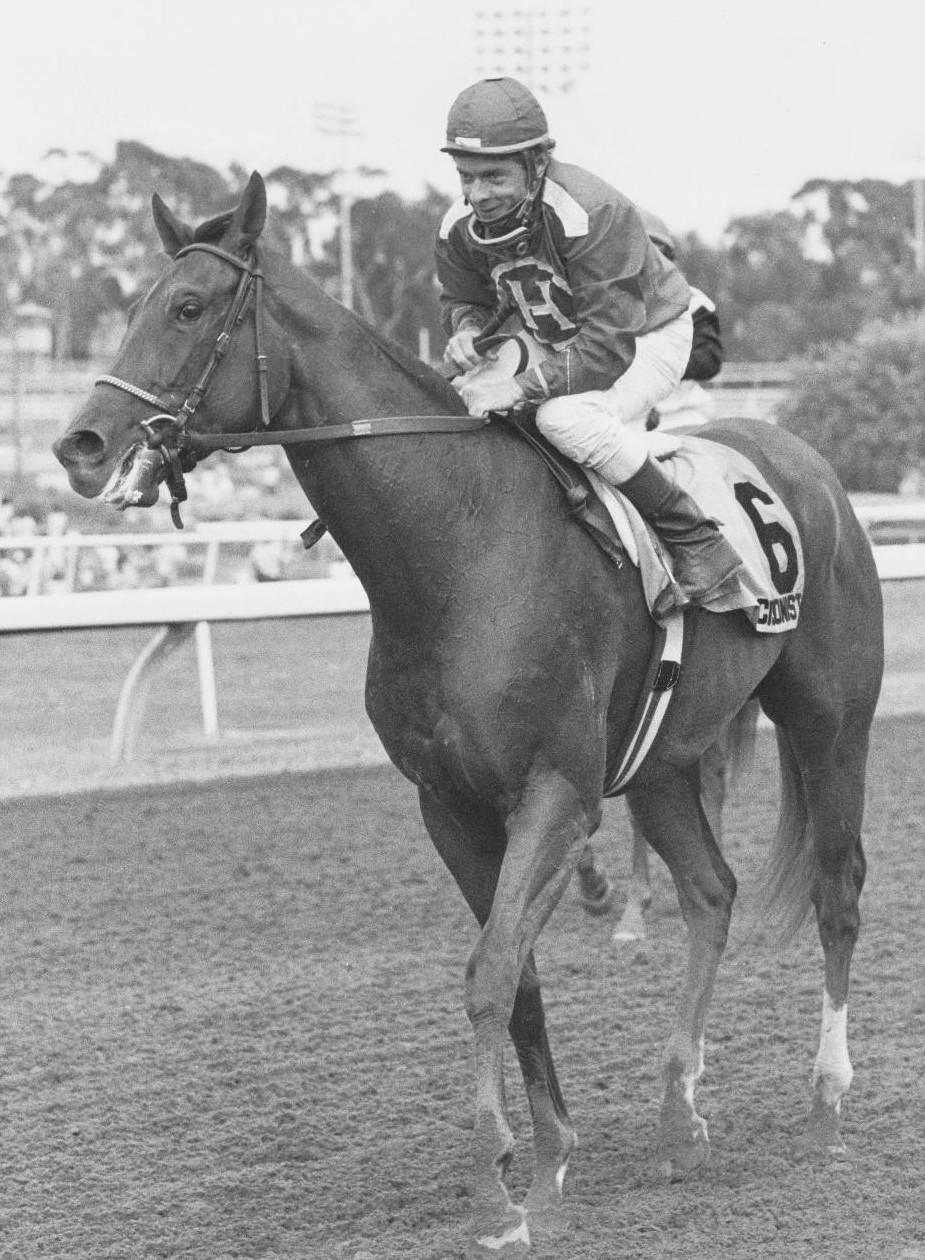 “I remember everything about Precisionist from that time,” said Eoin Harty, Russell’s assistant, who has gone on to a successful training career of his own.
“I remember everything about Precisionist from that time,” said Eoin Harty, Russell’s assistant, who has gone on to a successful training career of his own.
Freak of nature
“He was a fantastic horse, a beautiful horse, with a beautiful temperament. Just a freak of nature.
“I also remember when we took him over for the races, he would stop and dig his toes in,” Harty noted. “There was no subtlety to it. He would whip around and try to go back to the barn.
“That’s never a good sign, but luckily nothing ever came of it. The old ankle injury never seemed to bother him. He ran and he ran well, although he did drop McCarron in his first race back.”
The scene was Hollywood Park on a quiet Wednesday afternoon in June 1988, in a one-mile allowance event. The fans weren’t fooled; Precisionist was held at 90 cents on the dollar.
And when the gates opened, the old boy was off like a shot. Then he stumbled, and McCarron was airborne. Russell, who died in 2004, recalled the terrifying moment in a 2003 interview.
“Chris hung onto the reins for about the first 30 yards, being dragged along, but trying to keep Precisionist from being a loose horse,” Russell said. “By the time Chris finally had to let go, Precisionist was ten lengths behind the last horse.
“He caught them in the middle of the far turn, drew off and won by himself, literally. And he was loving it, having the time of his life.”
For his sins, Precisionist was next sent to New York at Hooper’s command to run in the Tom Fool Handicap, a pointless exercise as it turned out. He was brisk from the gate, then gave way, as if to say, “This wasn’t part of the deal.”
Back in California, Russell was able to settle things into a sensible summer campaign at Del Mar. Precisionist responded with an allowance win, a happy romp in the nine-furlong Cabrillo Handicap, and then a track-record mile in a stakes sponsored by Budweiser beer and the Breeders’ Cup. Thirty-five years later, the record still stands.
Then it was back to New York for valiant losses in the NYRA Mile and Breeders’ Cup Sprint, followed by two close calls at the late-year Hollywood meet on turf and dirt. For one last hurrah, Precisionist was removed from Russell and sent to Bill Donovan in Florida for a stakes race at Calder, because Hooper wanted to see his pride and joy go out a winner.
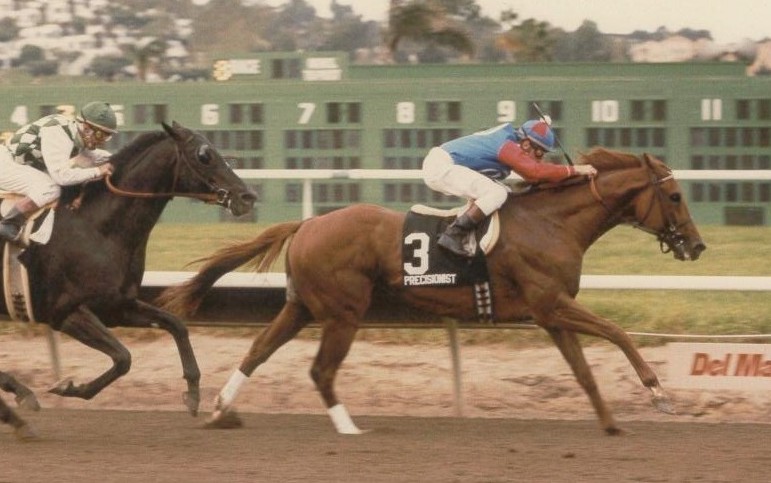 So there was Precisionist, majestic as ever, going postward in the Sunny Isle Handicap at seven furlongs on Christmas Eve, 1988. After showing a bit of his old speed, he was finished, and Craig Perret eased him through the final furlongs at the back of the 12-horse field.
So there was Precisionist, majestic as ever, going postward in the Sunny Isle Handicap at seven furlongs on Christmas Eve, 1988. After showing a bit of his old speed, he was finished, and Craig Perret eased him through the final furlongs at the back of the 12-horse field.
Chris McCarron rode Precisionist in 37 of his 46 races. The jockey was admitted to the Hall of Fame in 1989, the year after Precisionist retired, then Precisionist joined his partner there in 2003.
‘You had to stay out of his way’
“Precisionist taught me how to be a jockey,” said McCarron, whose career began in 1974. “I learned from him that you cannot fight a horse. You had to stay out of his way. That was Precisionist.”
On his final retirement, Precisionist was once again tried at stud and once again failed, although there were eventually four named foals who could boast him as their sire.
The last of the four was a filly, born in 1991 and named Preciseness. She was a daughter of Waviness, a member of one of Hooper’s most productive female families. Preciseness was 0-for-3 as a racehorse – in one of them she lost her rider, a family trait – but she redeemed herself first time out as a broodmare with her son, Draw Again, by the Hooper stallion Roman Diplomat.
Striding forth on the Calder turf, his chestnut coat glowing in tribute to his grandsire and Joe Bravo sporting the familiar Hooper silks, Draw Again won the G3 Tropical Park Derby in January 1998, then came right back three weeks later to win the Super Bowl Stakes on the main track.
As for Precisionist, by then he was living with Dr. Siobhan Ellison, a research veterinarian specializing in reproduction, at her Florida farm in Ocala. Once it was deemed hopeless the horse would ever be a viable stallion, he lived the life of a noble pensioner, befriended in his pasture by a mule named Mary Margaret.
In June of 2006, at age 25, Precisionist was donated to Old Friends Equine in Kentucky, where he was welcomed as a celebrity in residence and the star of the summer tourist season.
It was not long, however, that he began to show worrying symptoms that eventually were traced to malignant tumors growing in his nasal passages. They were inoperable, he continued to fail, and on Sept. 27, 2006, he wa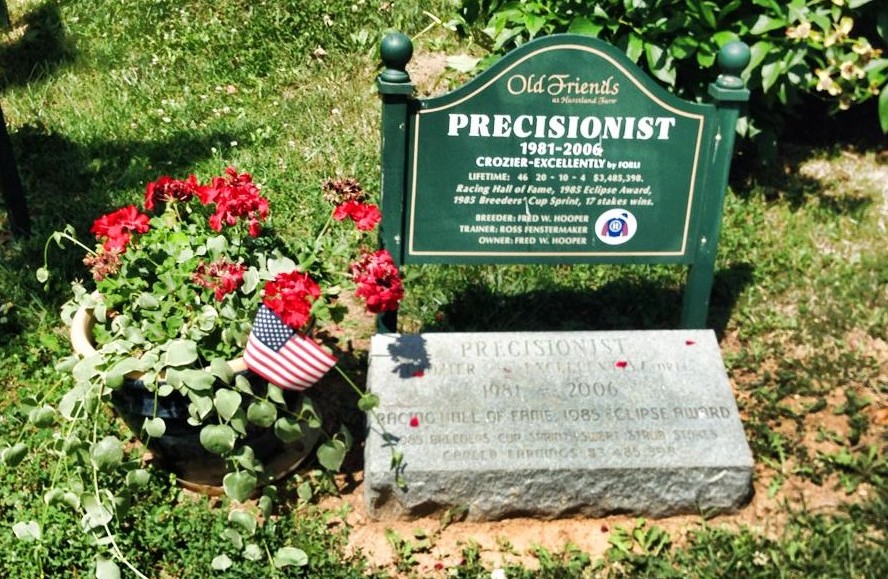 s mercifully euthanized.
s mercifully euthanized.
“He died on a beautiful early-autumn day – sunny, breezy, warm,” wrote Bill Mooney in his Eclipse Award-winning story of the death of Precisionist. “The leaves on the pair of oak trees that flanked his grave site were just beginning to change their colors.”
Mooney was among nine people present that day, including Michael Blowen, the founder and president of Old Friends. Dr. Holly S. Aldinger, a veterinarian with the Hagyard Equine Medical Institute in Lexington, administered the prescribed injections.
“Within seconds, Precisionist let out a heavy gasp, slowly knelt down, and rolled over on his left side,” Mooney wrote. “Already, he was brain dead, although he continued to reflexively breathe, and there was also some reflex action in his legs.
“As Blowen cradled Precisionist's head in his arms, Aldinger administered a second barbiturate-laden syringe to the horse's neck. Three minutes later, all reflexive movement had ceased. Precisionist was gone.”
But never forgotten.
• Read all Jay Hovdey's features in his Favorite Racehorses series
View the latest TRC Global Rankings for horses / jockeys / trainers / sires


